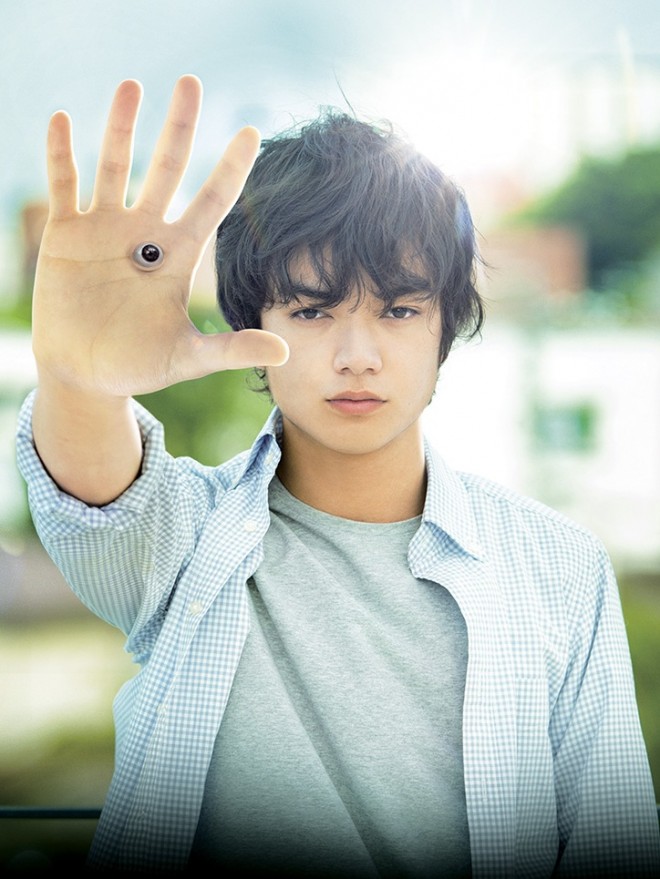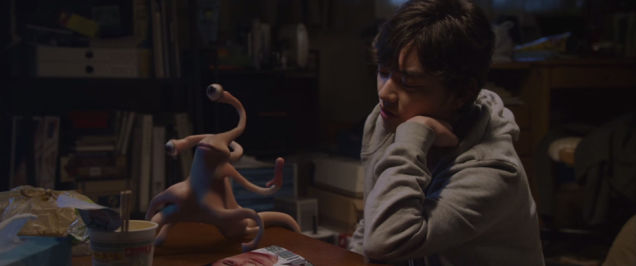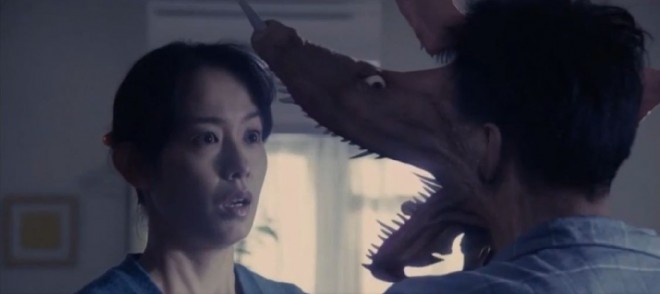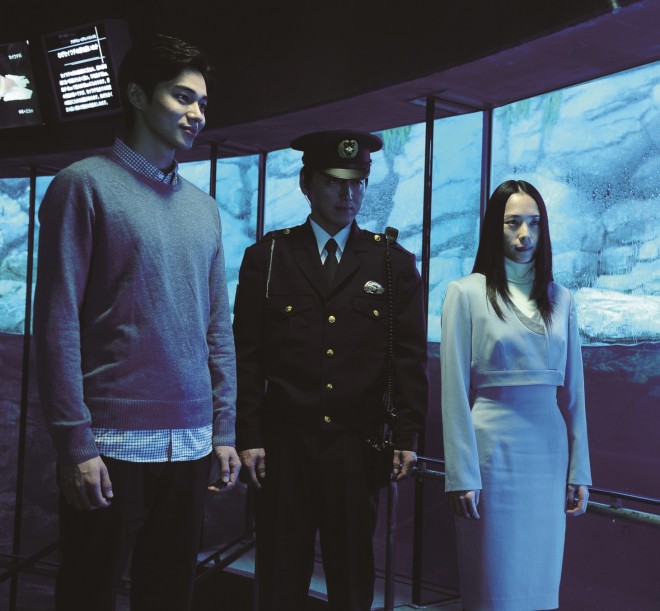
This year’s Eiga Sai (Japanese film festival), which runs July 10-19 at Shangri-La Plaza Cineplex, glorifies food and Japanese cuisine. But there’s one film that stands out for presenting a chilling twist to the subject matter—humans on the unpalatable end of the food chain.
“Parasyte” (original title “Kiseijuu”)—the first instalment of a two-part live action adaptation of a sci-fi manga series by Iwaaki Hitoshi—is set in a world where the remaining half of the human population is in conflict with the existence of a highly evolved species.
Any of these fleshy, wriggly worm-like creatures can invade a living person’s body, take control of its brain, and subsequently become the person.
What happens if a parasyte is unsuccessful at occupying a brain and lands on another body part? That dilemma befalls high-schooler Shin’ichi Izumi (a convincingly wimpy Shôta Sometani), whose parasyte accidentally penetrates his hand instead. Neither one is able to control the other, and both are thus forced into coexistence.
They end up developing an unusual, perverse friendship that propels the story from dark and comical to action-packed suspense thriller.

Insidious creatures
Visual-effects pro Takashi Yamazaki, award-winning director-screenwriter of the 2005 family drama “Always: Sunset on Third Street,” is able to exploit the plot points through his field of expertise and CGI. The latter has fleshed out insidious creatures which, though inhabiting the most gentle-looking human beings, could turn into monsters made more terrifying by their resemblance to the underside of an octopus.
There will be blood and gore and explosive “hand-to-head” combat, although the talky parts can be just as engaging.
The source material has given the film catchy lines and anecdotes, a good number of them delivered by the chatty and inquisitive but unsympathetic parasyte Migi (voiced by Sadao Abe), whose name, by the way, means “right” (as in Shin’ichi’s afflicted hand) in Japanese.
“I failed at controlling your brain, and I’m feeling in despair,” says the parasyte-turned-talking-hand as it dejectedly slumps onto a table, in response to its host’s insecurities and frequent whining.

Transformation
Migi and Shin’ichi’s journey together, especially toward the end of the film when they undergo behavioral and emotional transformation, seems like a statement on adolescence, that transitional phase during which life seems extra challenging and one develops issues that concern most anything: parents, independence, feelings of inadequacy and hopelessness.
Perhaps the bane of this film is that it comes in two parts—you would want to see the next one immediately.

Meantime, satisfy yourself with the Japanese film festival’s 10 other entries.
To be screened are “Wa-shoku: Beyond Sushi” and “The God of Ramen,” documentaries about Japanese cuisine; “Patisserie Coin de Rue,” the historical “A Tale of Samurai Cooking: A True Love Story” and the inspirational “It’s a Beautiful Life: Irodori,” dramas about life and survival in the food industry.
Also in the lineup are Oscar-nominated filmmaker Yûya Ishii’s “Our Family”; “Tada’s Do-It-All House: Disconcerto,” which is based on Shion Miura’s Naoki Prize-winning book series; the coming-of-age film “Wood Job!”; and two more manga-based live-action film adaptations, “Princess Jellyfish” and “Thermae Romae” II.
Eiga Sai, the annual Japanese film festival organized by Japan Foundation Manila, will run July 10-19 at Shangri-La Plaza Cineplex, Edsa cor. Shaw Blvd., Mandaluyong; July 14-19, FDCP Cinematheque, Davao; July 24-26, Abreeza Mall in Ayala, Davao; Aug. 12-15, UP Film Institute, Quezon City; and Aug. 19-23 at Ayala Center, Cebu.
For inquiries, call 3702597; visit www.facebook.com/shangrilaplazaofficialfanpage. Follow Shang on Instagram @shangrilaplazaofficial.
Visit www.jfmo.org.ph








































